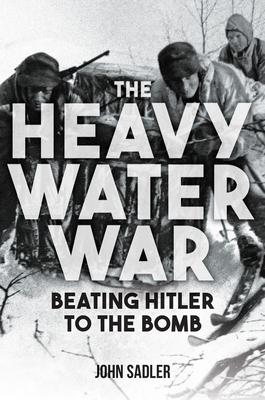If Hitler had succeeded in developing a nuclear bomb, that could have been both the end of the Second World War and of civilization as we know it. A handful of commandos stopped him.
During the course of the Second World War, the Allies mounted a series of attempts to prevent Germany from manufacturing heavy water by utilizing hydroelectric plants in occupied Norway. These efforts comprised a mix of bomber and commando raids. The overall aim was stop Nazi Germany building a nuclear bomb. In fact, Hitler was never as close as the Allies thought, but the idea that his regime could construct and deploy a device was the ultimate doomsday scenario, one that would have tilted the balance in favor of the Nazis. The mere threat might have been sufficient to force a negotiated peace with the perceived reality of a Nazi bomb hanging over the world like a nuclear-powered sword of Damocles. Production, and therefore Allied aims, centered on the Vemork Power Station standing by the Rjukan Waterfall at Telemark. A series of daring raids, Operations Grouse, Freshman and Gunnerside, neutralized the plant’s capacity. In Operation Freshman, every single glider-borne paratrooper was either captured or killed. In February 1943, a force of SOE-trained Norwegian commandos succeeded in sabotaging the plant’s production capacity. Further manufacturing effort was abandoned, and the Nazis attempted to transport the heavy water they had about the ferry SF ’Hydro’. The Norwegians managed to sink the vessel in the deep waters of Lake Tinn. The stakes in any special forces raids in history have never been higher.| FindBook |
有 1 項符合
The Heavy Water War: Beating Hitler to the Bomb的圖書 |
 |
The Heavy Water War: Beating Hitler to the Bomb 作者:Sadler 出版社:Amberley Publishing 出版日期:2024-01-15 語言:英文 規格:精裝 / 320頁 / 普通級/ 初版 |
| 圖書館借閱 |
| 國家圖書館 | 全國圖書書目資訊網 | 國立公共資訊圖書館 | 電子書服務平台 | MetaCat 跨館整合查詢 |
| 臺北市立圖書館 | 新北市立圖書館 | 基隆市公共圖書館 | 桃園市立圖書館 | 新竹縣公共圖書館 |
| 苗栗縣立圖書館 | 臺中市立圖書館 | 彰化縣公共圖書館 | 南投縣文化局 | 雲林縣公共圖書館 |
| 嘉義縣圖書館 | 臺南市立圖書館 | 高雄市立圖書館 | 屏東縣公共圖書館 | 宜蘭縣公共圖書館 |
| 花蓮縣文化局 | 臺東縣文化處 |
|
|
圖書介紹 - 資料來源:博客來 評分:
圖書名稱:The Heavy Water War: Beating Hitler to the Bomb
內容簡介
作者簡介
John Sadler has had a lifelong interest in military history. He now combines writing with lecturing in History at Newcastle University and working as a battlefield tour guide, living history interpreter, and heritage consultant. He is a keen re-enactor and a long time member of the Sealed Knot Society. He is the author of more than 40 books. He lives in mid-Northumberland.
|











